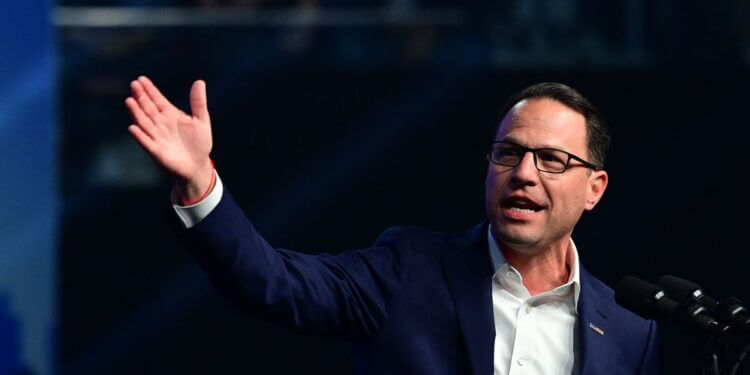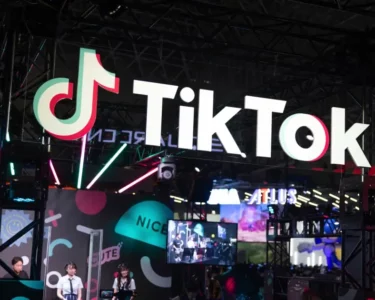In the middle of a rally during the final week of his campaign, Josh Shapiro received his first notification to BeReal. The on-the-spot photo app has amassed a huge following amongst young people seeking authenticity over platforms that encourage more polished posts — but it’s an unusual platform for politicians, who are used to more painstakingly rehearsed contact with voters.
For the Shapiro team, launching the BeReal account was a natural next step for their digital program that hasn’t just advertised Shapiro as a candidate but also cast him as the leading role on the platforms young people use the most.
“[Young people] see these platforms, where someone has to be wholeheartedly who they are, and they’re a little bit more discerning,” Annie Newman, Shapiro’s digital director, said in an interview last week. “We can tell when somebody’s acting authentically or doing something their digital director asked them to do.”
It’s a sign of how pivotal online platforms have become to the business of politics. Campaigns have dabbled in influencer marketing and digital outreach for several cycles now, but this midterm season, those skills became a necessity. More than 8 million young people became eligible to vote this year, and with turnout expectations scrambled after Trump, their support is imperative for battleground races.
At the same time, rapidly evolving media diets and the fluidity of platform policies have forced campaigns into new tactics, particularly in-house content creation. Instead of just treating candidates as products to be advertised, this new style of campaigning turns the candidate into a content creator, with often unpredictable consequences.
Earlier this month, CNBC reported that groups, like the Democratic Governors Association, dramatically cut their spending on Facebook, signaling that the platform had lost much of its effectiveness over the last two years. Instead of Facebook, campaigns and political action committees focused more of their donor dollars on streaming services like Hulu, where targeting is more precise and skipping ads is more difficult.
“It doesn’t make sense to put a uniquely sharp 30-second ad on Facebook, which would be totally different from everything people are seeing” on their feeds, Alex Kellner, managing director at Bully Pulpit Interactive, told The Verge in August. “So, can you get that same message into a carousel? Can you get that same message into a shorter slice of life treatment?”
Democratic campaigns have spent this midterm cycle building massive digital programs, crafting messages best suited for each platform in a manner tantamount to becoming their own digital media companies. John Fetterman, who’s running to represent Pennsylvania in the US Senate, dunks on his Republican opponent, Dr. Mehmet Oz, in curt tweets. Tim Ryan, Democratic Senate hopeful for Ohio, embodies the goofy Midwestern dad, enlisting staffers armed with surfboards to film social videos poking fun at his rival. Often with the help of consultants, the candidates have played a more intimate role in production than ever before.
TikTok has also become a central outreach platform, despite ongoing national security concerns. National security hawks like Sens. Marco Rubio (R-FL) and Mark Warner (D-VA) have denounced the app’s ties with China — but as the 2020 election season mounted, the platform’s algorithm and traction with young people proved too tempting for many campaigns to resist. The platform banned all political fundraising in September, including everything from turning off a politician’s access to monetization features to barring them from using their bios to link out to fundraising pages (political advertising was banned in 2019).
But even as TikTok rolled out these changes in the fall, campaigns continued to pour resources into the platform. With Facebook’s targeting value declining, candidates embraced the brand of organic short-form video TikTok popularized. These videos may not translate into money as easily, but they could translate into activated voters, especially younger ones.
“Candidates like Tim Ryan and Fetterman have been stars on TikTok, precisely because they are taking a digital-first approach and trusting the young folks they hired,” Caleb Brock, a progressive digital consultant, told The Verge on Tuesday. “It comes down to trusting the folks on your campaign to take risks and push the boundaries of what we are doing on social media.”
“It comes down to trusting the folks on your campaign to take risks and push the boundaries of what we are doing on social media”
While Shapiro, Fetterman, and Ryan appear often on their TikTok accounts, the content’s direction is primarily influenced by the young people they employ.
Speaking with The Verge in August, Fetterman’s communications director, Joe Calvello, explained that the candidate’s TikTok account would be run by a Gen Z-aged staffer who had 25,000 followers on her personal account. By handing over the reins to young staffers, candidates are better positioned to make the content and participate in the viral trends that best resonate with young voters. Like helping your mom send a text message after she forgets her glasses, the experience and the content becomes more authentic and relatable to viewers.
“Every platform demands a different type of content,” Julia McCarthy, NextGen America’s social media influencer manager, said in a September interview. “We should lean on content creators as the experts on these platforms.”
Another hidden factor is Apple’s ad policies, which have blunted the edge platform advertising once held over native content. Last year, the company rolled out a new feature called App Tracking Transparency, which provides users a choice in what advertisers they’d allow to collect their data. Privacy advocates praised the feature, but it has been a huge challenge for major political ad distributors like Facebook and Snap. If users opt out of tracking, platforms won’t be able to target their ads, reducing the incentive to pay for the audience.
After the content is made comes the question of how to distribute it. Since 2020, President Joe Biden’s campaign and White House staff have enlisted hoards of online influencers across platforms like Instagram and TikTok to spread the administration’s messaging. Keeping up with the trend, the Democratic National Committee set up its own online content distribution hub for influencers in August. State and local candidates have followed in their footsteps, building their own army of influencers.
But instead of collaborating with the biggest names on social media, down-ballot campaigns build relationships with creators in their states and districts. The Shapiro campaign runs a 41-person network of TikTok influencers, reaching over 20 million followers, to spread its message online across the country. But it also developed its own in-house micro-influencer program, called the Shapiro Squad, focused on recruiting smaller influencers located in Pennsylvania to more directly engage with local voters about his campaign.
That kind of active platform outreach is a major shift from the paranoia that followed the 2016 election — but for younger staffers like Brock, it’s essential to bring younger voters to the polls.
“The algorithms are stacked against progressives and the future we’re building towards, he said on Tuesday. “It’s high time we fight back.”





